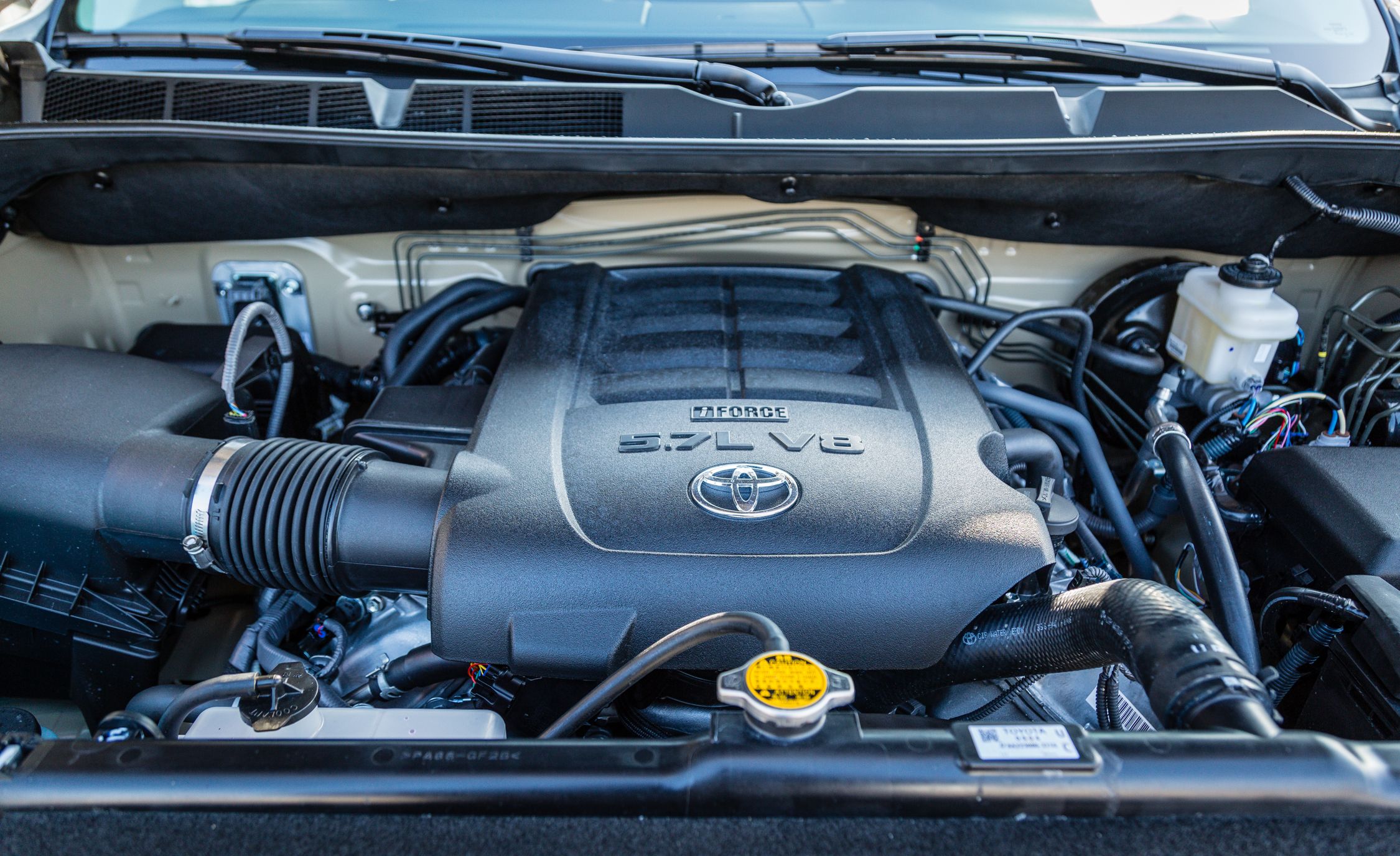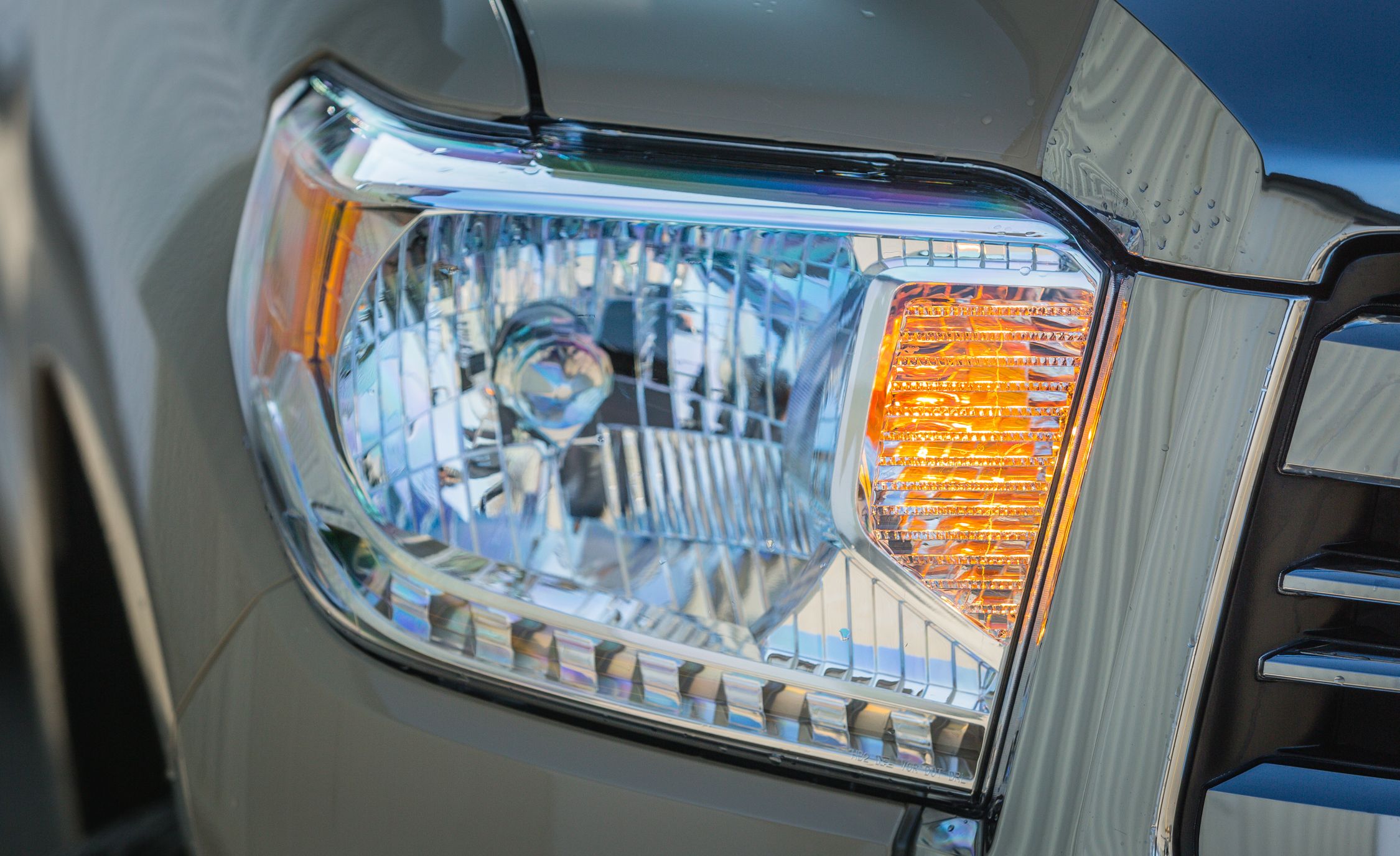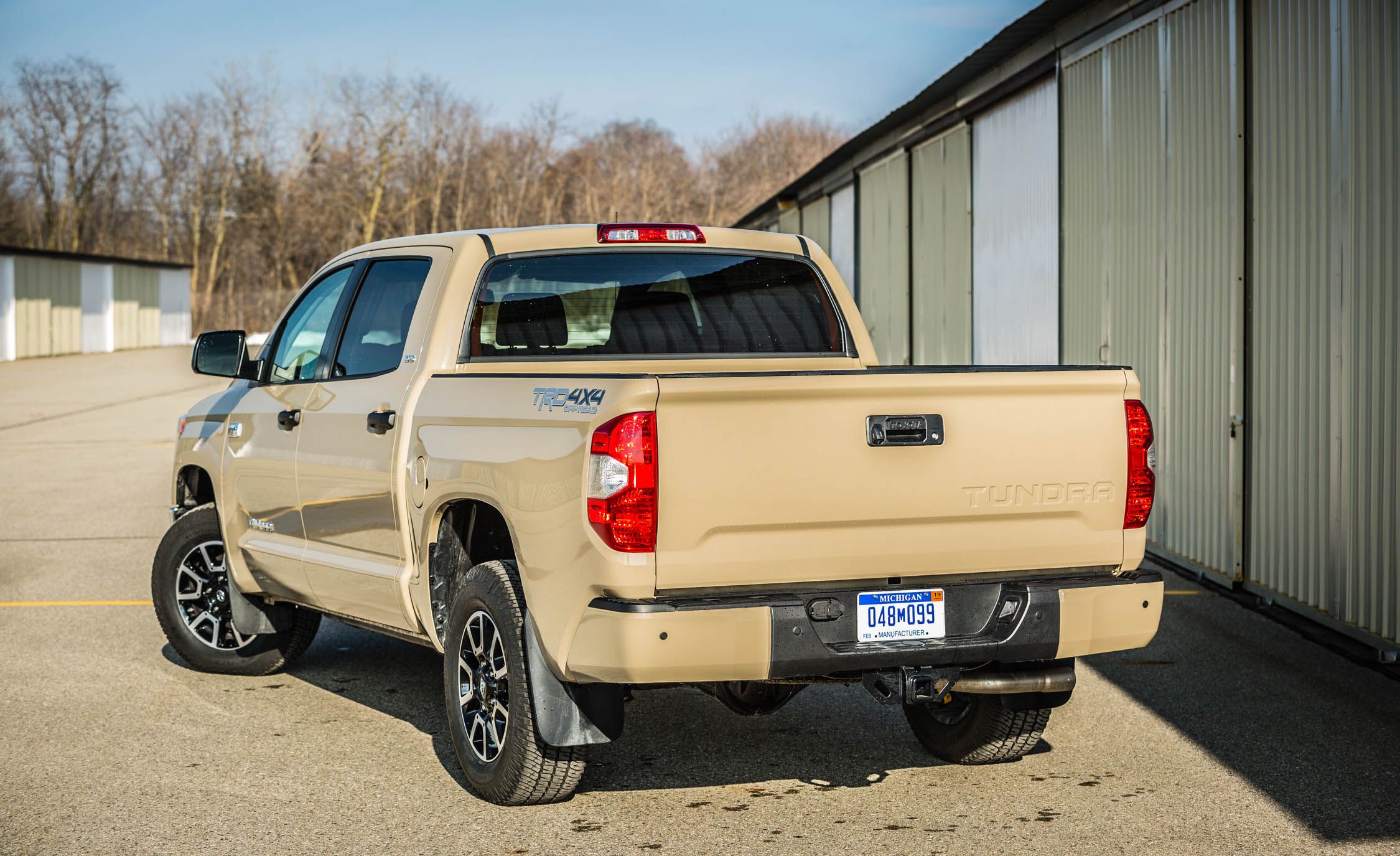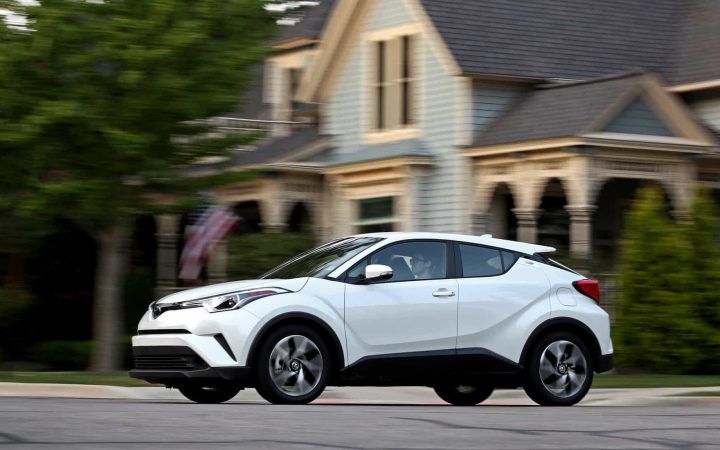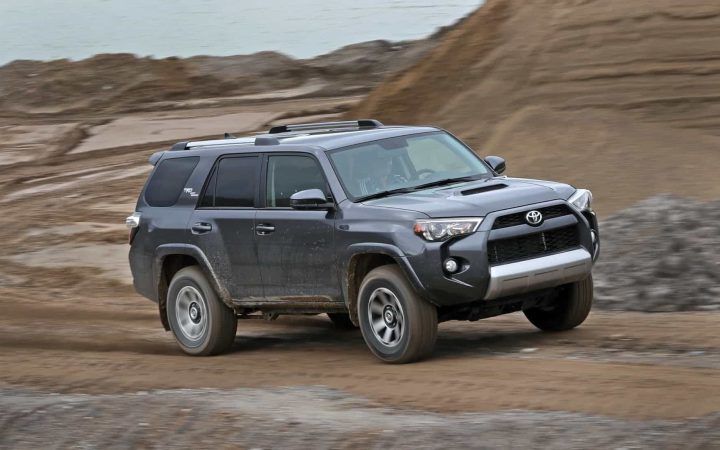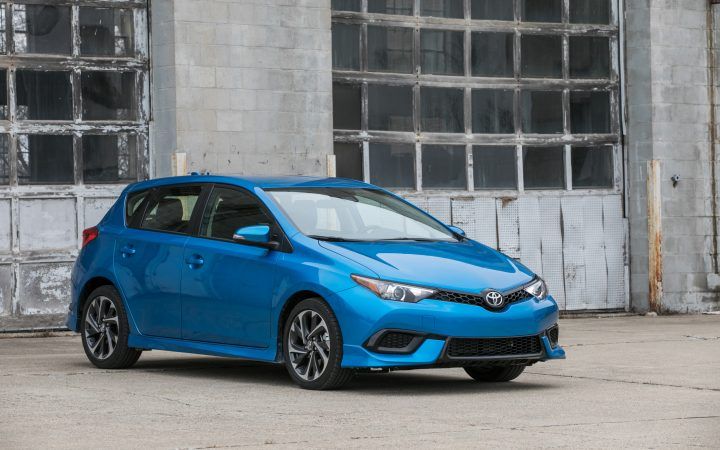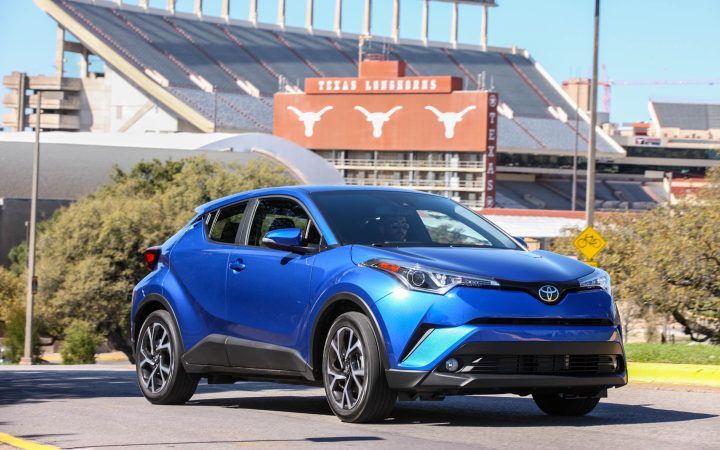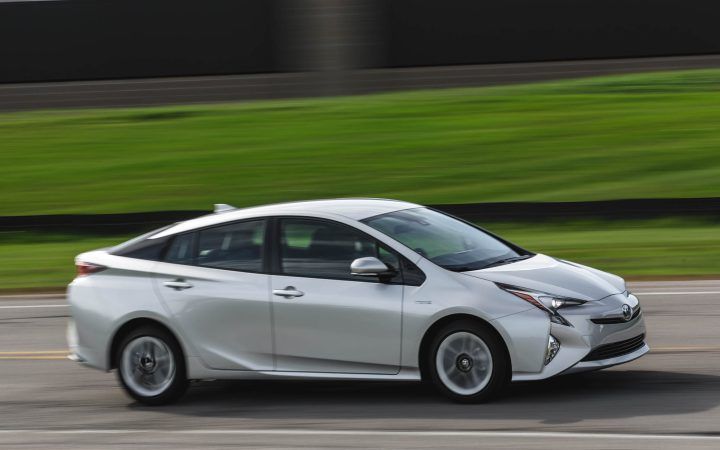The 2017 Toyota Tundra is a full-size pickup truck that offers three cab styles - regular cab, extended double cab and the CrewMax crew cab - as well as two wheelbases and three bed lengths - a 5.5-foot short bed, a 6.5-foot standard bed and an 8.1-foot long bed. Depending on the cab style, the Tundra can seat either three or five to six passengers, depending on whether you opt for front buckets or a bench seat.
In terms of powertrain, the Tundra is offered with a choice of two V8 engines. A six-speed automatic transmission and rear-wheel drive (2WD) are standard, while four-wheel drive (4WD) with a two-speed transfer case is optional. The standard 4.6-liter V8 produces 310 horsepower and 327 pound feet of torque, and when properly equipped, the maximum towing capacity is 6,800 pounds. EPA fuel economy estimates for 2WD models are 16 mpg combined (15 city/19 highway), while 4WD models are 16 mpg combined (14 city/18 highway).
Alternatively, you can opt for the 5.7-liter V8, which puts out 381 hp and 401 lb-ft of torque. This engine is standard on the regular cab and all variations of the Limited, Platinum, 1794 and TRD Pro, and is optional on SR5 models. EPA fuel economy estimates for 2WD models are 15 mpg combined (13 city/18 highway), while 4WD models are 15 mpg combined (13 city/17 highway).
In 1961, oil geologist Robert Liscomb made a remarkable discovery in the Alaskan tundra - a large fossil. Sadly, a year later, Liscomb perished in a rock slide and his fossil was forgotten in a Shell warehouse until the early 1980s. It was then sent to the United States Geological Survey, where scientists confirmed it was indeed a dinosaur bone, sparking a new wave of exploration.
Today, a modern-day equivalent of this fossil can be found at your local Toyota dealer - the Tundra pickup truck. Although it received a mild refresh for 2014, the 2017 model still uses the same second-generation platform that was introduced in 2007. An update is planned for 2018, but an all-new Tundra won't be available until 2019. The one we tested was painted in an osseous Quicksand and covered with $395 paint-protection film, and was equipped with the optional $2030 TRD Off-Road package, which includes 18-inch aluminum wheels and Michelin LTX all-terrain rubber, Bilstein dampers, skid plates to protect the engine and fuel tank, and bedside decals.
The optional dampers firm up the ride and manage side-to-side motions well, but on the interstate, persistent road blemishes can cause some discomfort. However, when driving on Michigan's washboard- and pothole-ridden back roads, the dampers come to life and keep wheel motion in check, absorbing large impacts and keeping the tires connected to the ground by limiting wheel hop. The Tundra's overall ride quality was commendable a decade ago, but compared to the Ford F-150 and the Ram 1500, it falls short today.
The Tundra still relies on a hydraulic-assist system for power steering, rather than the more common electrically assisted system, but it does not offer any advantages. The steering lacks the on-center feel and requires frequent corrections to stay on a straight path. Although the light weighting of the vehicle makes it easy to maneuver at low speeds, precise placement of this large truck depends on the driver's visual cues rather than any sensation from the steering wheel.
Under the hood is the Toyota i-Force 32-valve V-8, which has remained unchanged since its 2007 debut. It roars to life with the turn of a metal key (push-button start is not available), and its 5.7-liter aluminum engine provides 381 horsepower and 401 lb-ft of torque. This power is enough to get the 5858-pound Tundra from zero to 60 mph in 6.4 seconds and through the quarter-mile in 15.1 seconds, which is the same performance as a recently tested Nissan Titan Pro-4X. However, the Tundra does not compare well with the best-selling trucks. A Chevrolet Silverado with its 6.2-liter V-8 engine achieved 5.7 seconds to 60 mph and 14.3 seconds in the quarter-mile, while a Ford F-150 with its 3.5-liter twin-turbocharged V-6 reached the same marks in 5.6 and 14.4 seconds.
The Tundra is still equipped with the six-speed automatic transmission it has had since its launch, while other full-size trucks now have eight- and even 10-speed transmissions. Nevertheless, the Tundra's transmission shifts quickly and accurately, and it's quick to downshift into the right gear when passing other vehicles.
Toyota deserves credit for its Tundra truck, as it performed comparably to other full-size V-8 pickups tested recently. To help with fuel efficiency, our test truck was equipped with an optional 38-gallon tank. During our 800-mile test, we got 14 mpg, just one mpg shy of the EPA combined rating and the same as a 2016 Ram Rebel with an eight-speed automatic. On the 200-mile highway fuel-economy loop, we saw 17 mpg, exactly matching the EPA highway rating, giving us a potential range of 640 miles. The only issue was a premature low-fuel warning, which came on with nine gallons of fuel left, more than enough to get you further than the 50 miles shown on the trip computer.
Climbing into the Tundra’s interior is like taking a step back in time. Although there were some minor upgrades with the 2014 facelift, the interior is still quite dated. Our truck had the optional SR5 Upgrade package ($1220), which added bucket seats (power-adjusting only on the driver’s side, with power-adjustable lumbar support), a front center console with a floor-mounted shifter, a tilting and telescoping steering wheel, three front cupholders, an anti-theft system, the larger fuel tank, and an auto-dimming rearview mirror with a compass. Unfortunately, heated seats are only available on the Limited trim level. All-weather floor mats are a good addition, though, and are worth the $219 asking price. Silver-painted plastic surrounds the 7.0-inch Entune infotainment system, which is not too intuitive but has plenty of buttons and knobs.
The $970 Safety and Convenience package on our pickup truck comes with front and rear parking sensors, blind-spot monitoring, and rear cross-traffic alerts. While the Tundra may not have the most advanced safety features, such as adaptive cruise control, this will be included as standard on the 2018 Tundras as part of Toyota’s Safety Sense P bundle. This package provides an extra layer of protection and convenience for drivers.
The Tundra CrewMax made a big splash when it came out with the most roomy second row, but now it's lagging behind with just 62 cubic feet of space compared to the F-150's 67 and the Silverado's 63. The Tundra has a unique feature, though - its entire rear window lowers, so you can pass long objects through or let passengers grab stuff from the bed.
Today's full-size trucks have become luxe land yachts, packed with high-tech and built with lightweight materials. The Toyota Tundra, though, is a throwback to simpler times, but still fits right in with today's larger trucks. Other brands brag about their towing power, but Toyota hasn't joined the half-ton arms race. The SR5 comes with a towing package and trailer-brake controller, and can pull up to 9800 pounds - that's almost a ton less than a similar Chevy pickup (11,700 pounds).
This Tundra's got it all - affordability, space, and capability - and it'll set you back $45,174. It may not be the most stylish or tech-packed, but it's still a hit with folks; it sells over 100,000 units a year, so it's definitely not going extinct anytime soon.




